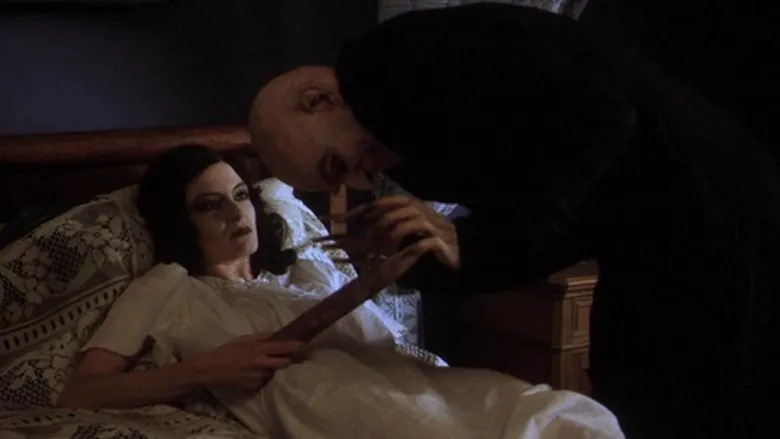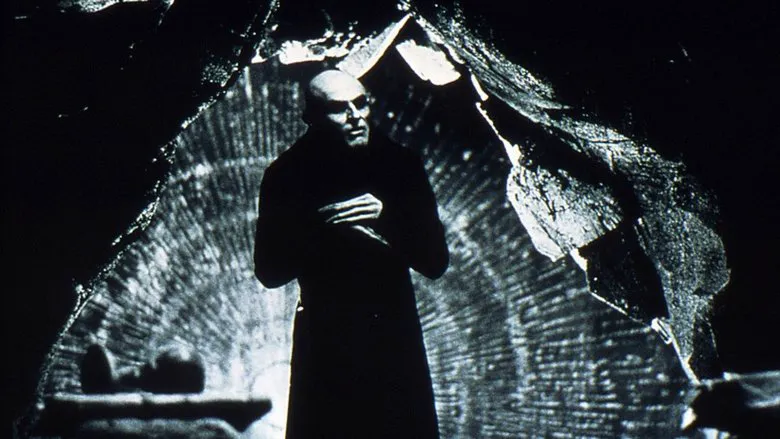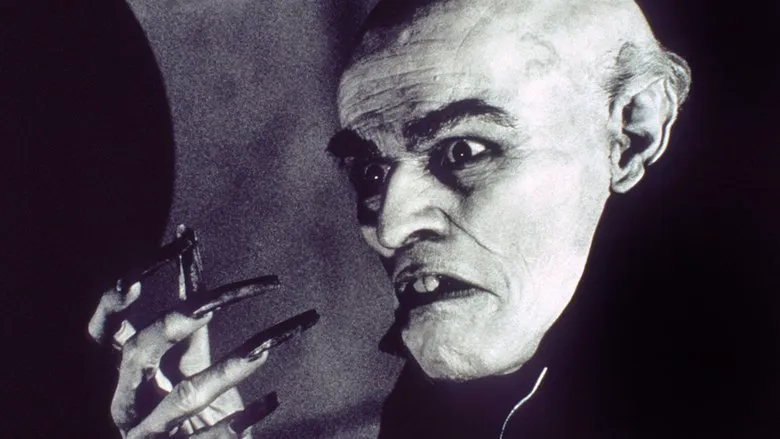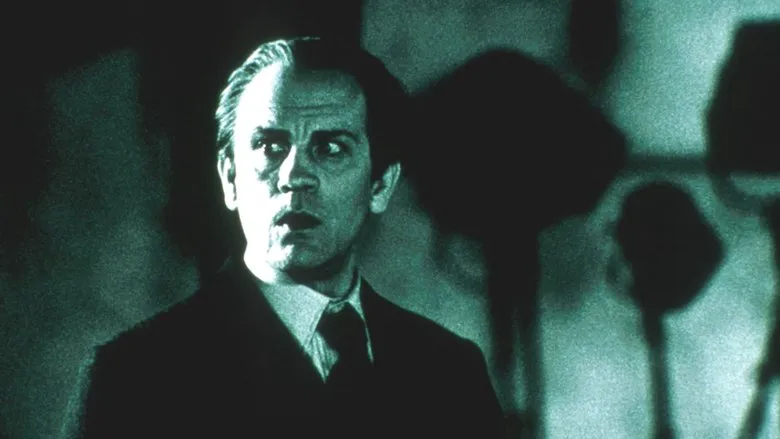
After watching a parody, viewers often confidently head to the nearest rental store, demanding the original: a VHS tape of “Nosferatu.” Friedrich Wilhelm Murnau (1889-1931), the classic German expressionist, instantly became a cult figure of the new century. And everyone is intrigued by the mysterious Max Schreck.
The Enigma of Max Schreck
The name “Schreck” means “terror,” and Schreck’s past is shrouded in mystery. One theory suggests he toiled in second-rate theaters under a less sinister name until Murnau discovered him. On the set of “Nosferatu,” his pointy-eared figure with long, claw-like fingers appeared as if from nowhere; his deeply sunken eyes expressed detachment from the world and mortal loneliness. The recent film “Shadow of the Vampire” accurately conveys the mystique surrounding Schreck, which frightened the cast and crew. He never appeared before his colleagues out of character; no one ever saw him without makeup and a cloak. It seemed he didn’t need to act; simply being in the frame was enough.
This mannerism was the first thing Willem Dafoe, who played Schreck in “Shadow of the Vampire,” adopted. He, too, made it a habit to stay in character, sometimes causing those around him to doubt his sanity. This helped him earn an Oscar nomination, but not the Oscar itself, which feels unjust.
“Shadow of the Vampire”: A Glimpse Behind the Scenes
“Shadow of the Vampire” revels in the chaos of creation. According to its version of events, the great film “Nosferatu” was woven from the whims, scandals, and bad temper of Murnau himself, who also preferred the company of men and willingly offered a plump prima donna to the vampire. “Why the cameraman!” he shouts at Schreck, who has sharpened his teeth to tear the throat of a handsome cameraman. “Why not the assistant?” “I’ll eat the assistant later. I eat like an old man pees – a little at a time, or all at once,” the omnivorous Schreck promises reasonably.

In reality, things were probably slightly different. But only slightly. Of course, the actor Max Schreck later worked normally in theaters in Berlin and Munich, appeared in twelve more films, and died peacefully of a heart attack at the age of 56. But cinema is a crazy business: intuitive insights arise in the clatter of clapboards, the whimpers of stars, and the alchemy of editing rooms. And there was indeed something irrational in “Nosferatu,” something that still makes us perceive routine negativity as a ghostly forest against a black sky.
Murnau made the film so seriously, as if he believed in vampires. You don’t film deliberate legends like that. “It feels like watching a documentary,” marveled Steven Katz, the screenwriter of “Shadow of the Vampire.” He found a rare photo of Murnau on set – his entire team in white lab coats and protective goggles. “I realized that he treated the film like a scientific project.” The unique phosphorescent imagery in “Nosferatu” heightened the atmosphere of horror. The vampire was a symbolic figure – an image of inevitable global evil, a vague but formidable danger. A mythological and all-encompassing image.

The Prophetic Nature of Early Horror
The film was prophetic. Three great embodiments of evil emerged in German cinema almost simultaneously: Caligari in Robert Wiene’s film, Mabuse in Fritz Lang’s, and Nosferatu. The atmosphere surrounding them was the most powerful impression of these films – in it, the German viewer recognized their own confusion, the chaos of the soul, and uncertainty about the near future. The very space of the films was dark and unstable, their absurdity strangely echoing similar sentiments in Tolstoy’s “The Power of Darkness,” which also found its place on the German screen of those years.
Karl Dreyer explained the impact of such art most fully: “Imagine that we are sitting in a room. We are told that there is a corpse behind the door. The room instantly transforms, and although physically everything remains the same, everything now looks different – both the light and the air have changed. And the point is that we have changed.” Murnau focused on this transformation; he mastered it perfectly. The plot recedes into the background before the symphony of horror. This is not a film about a specific vampire, but about a phenomenon: vampirism. A philosophical concept, abstracted from sharp fangs and tender necks.
Steven Katz accurately noted that the myth of vampires is convenient: it can be adapted to the circumstances of the time. It was a metaphor for the plague in the Middle Ages. In the years of fear of syphilis, it embodied carnal temptation. And it always expressed xenophobia – bloodsuckers come from afar. In the era of AIDS, “Interview with the Vampire” emerged, where the motif of sexual minorities is clear. Humanity constantly adapts the myth to current needs and hopes for the saving sun, which will rise and drive away the bloodsuckers, solving all problems.
In the 1920s, the myth foreshadowed tyranny. It is no coincidence that the Nazis would soon begin to practice the very sophisticated tortures that German cinema had fantasized about in strange “black” films – this is a historical fact. If we consider it a pattern, our “Brother 2,” stubbornly rushing headlong, reflected the real psychophysics of Russia’s near future. And it remains to understand what influences what more – the currents wandering in society on their reflection in art, or art, giving these currents physical expression and a new impetus for development.
And why in the civilized name of the vampire Russian roots were clearly heard: Count Orlok - almost Orlov.

The Life and Legacy of F.W. Murnau
Friedrich Wilhelm Murnau (Plumpe) was born in 1889, worked in the theater, and made his first film, “The Boy in Blue” (1919). He made 22 films, less than half of which have survived. Originally from Westphalia, he loved pastoral scenes and was sentimental in his early films until he came under the influence of the expressionists. Little is known about him. Everyone he worked with has died, and he rarely gave interviews. In 1931, he signed a contract with Paramount, but soon died in a car accident on the eve of the premiere of the film “Tabu,” which he made with Robert Flaherty. After which rumors of his homosexuality spread: shortly before his death, he hired a 14-year-old Filipino, Garcia Stevenson, as a lackey, who was driving the Packard at the tragic moment, and, as malicious tongues claimed, Murnau was found at Garcia’s feet in a strange pose. Eleven people attended the funeral, and only Greta Garbo dared to see off the genius from among the celebrities. She also ordered a posthumous mask, which she kept in Hollywood all her life.
The creative impulse given by Murnau to world artistic thought proved to be powerful – attempts to repeat it at a new technical level look more than worthy, from “Nosferatu the Vampyre,” filmed in 1979 by Werner Herzog with Klaus Kinski and Isabelle Adjani, – slow, elegiac, not scary, but unexpected, to Coppola’s “Dracula” and Jim Shepard’s latest musical “Nosferatu.”